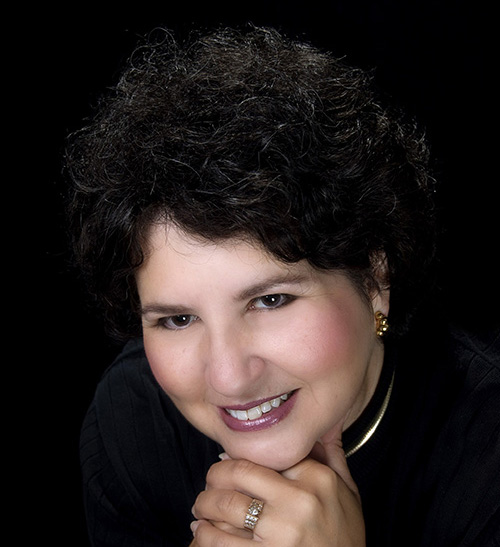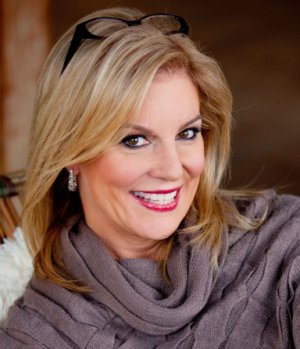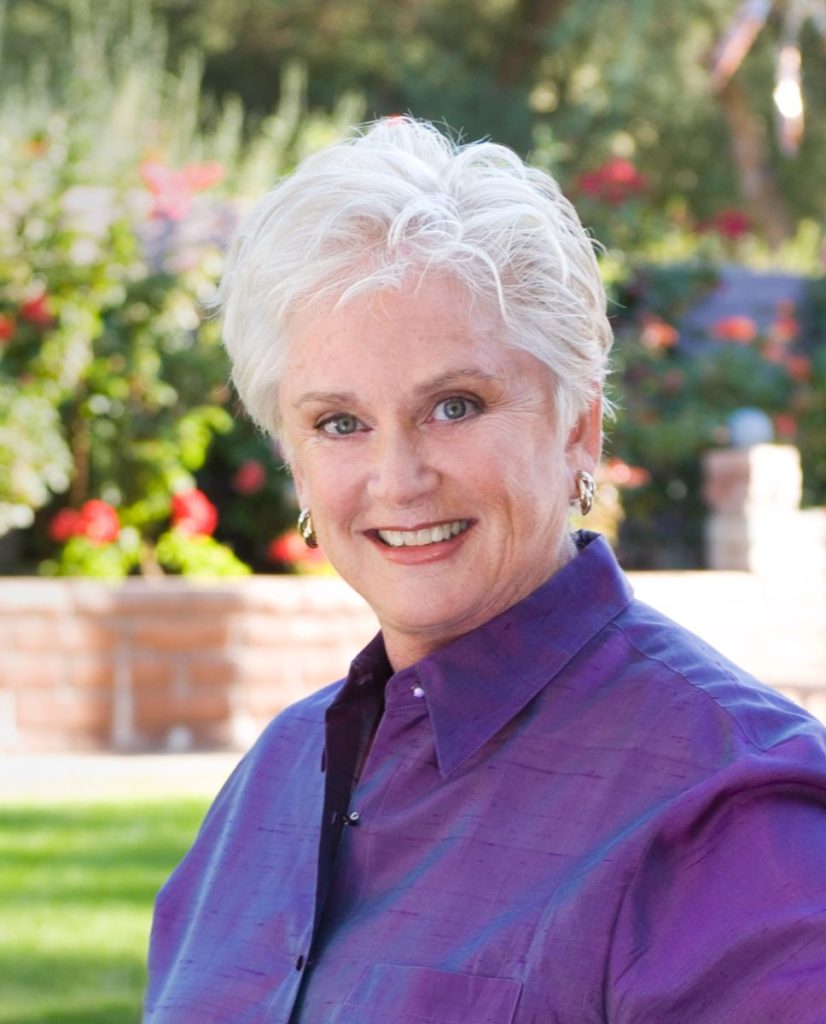 Every week as SmallBizLady, I conduct interviews with experts on my Twitter talk show #SmallBizChat. The show takes place every Wednesday on Twitter from 8-9 pm ET. This is excerpted from my recent interview with Andy Molinsky. Andy Molinsky is a Professor of Organizational Behavior at the Brandeis International Business School. His forthcoming book, Reach: A New Strategy to Help You Step Outside Your Comfort Zone, Rise to the Challenge, and Build Confidence is to be published by Penguin Random House in January 2017. For more information visit andymolinsky.com and follow Andy on Twitter @andymolinsky.
Every week as SmallBizLady, I conduct interviews with experts on my Twitter talk show #SmallBizChat. The show takes place every Wednesday on Twitter from 8-9 pm ET. This is excerpted from my recent interview with Andy Molinsky. Andy Molinsky is a Professor of Organizational Behavior at the Brandeis International Business School. His forthcoming book, Reach: A New Strategy to Help You Step Outside Your Comfort Zone, Rise to the Challenge, and Build Confidence is to be published by Penguin Random House in January 2017. For more information visit andymolinsky.com and follow Andy on Twitter @andymolinsky.
SmallBizLady: Why is it so important to step outside your comfort zone?
AndyM: As a small business owner, you need to be a jack of all trades. You need to be good at marketing and sales, and operations. You need to do finances, staff your team, and, when necessary lay off or fire your team. You need to deal with conflict. The list goes on and on! And when you think of it – what single individual is possibly capable of all these things? To succeed, you have to be able to grow, learn and develop… which means acting outside your comfort zone.
SmallBizLady: SAY a few more words about what you mean by comfort zone.
AndyM: Sure – your comfort zone is where things are easy and automatic. If you’re an extrovert and love to hobnob with clients, or potential clients, going to professional conferences and networking would be in your comfort zone. But for someone who isn’t as comfortable in these types of situations, it might be in what we call your “stretch” zone, or even your panic zone!
SmallBizLady: DOES EACH OF US HAVE DIFFERENT STRETCH AND PANIC ZONES?
AndyM: Yes – if you think of it, there are probably some situations that come super easy to you. You might be a crackerjack finance and accounting person – so for you, inputting a new accounting program or tweaking your financials would feel just fine. But in other situations – say, dealing with conflict among employees, or confronting someone about a potential ethical violation, you feel super uncomfortable – bordering on panic. We all have our strengths and weaknesses. The key is to identify the areas of improvement and have the courage to address them.
SmallBizLady: DO PEOPLE SOMETIMES AVOID STEPPING OUTSIDE THEIR COMFORT ZONES?
AndyM: Most definitely! And in many clever ways. Some of us “pass the buck” and give people tasks to do that we, as owners, should probably be the ones to do. For example, the owner of a small travel agency might send his assistant off to a major networking opportunity to represent the company, because he’s uncomfortable with groups and large audiences. But in the end, he probably is the one to best represent the brand, so that would be a “dysfunctional” case of buck passing.
SmallBizLady: WHAT ARE OTHER CASES OF AVOIDANCE?
AndyM: Sure! Some people might do a challenging task outside their comfort zone, but only part way. For example, in this networking case, they might bite the bullet and be willing to put themselves out there, but only on social media, as opposed to in face-to-face situations. Or when giving feedback to someone, a conflict avoidant owner might provide only some of the negative, critical feedback as opposed to the entire message because of how uncomfortable it feels.
SmallBizLady: HOW CAN PEOPLE GET THE COURAGE TO STEP OUTSIDE THEIR COMFORT ZONES?
AndyM: That’s exactly what my new book Reach is about! I have been studying, interviewing, and working with people across a wide variety of professional settings – including small business owners – to understand what the best practices are with respect to acting outside your comfort zone successfully.
SmallBizLady: WHAT ARE SOME OF THE RESULTS OF YOUR STUDY?
AndyM: Well, so let’s imagine the situation. A small business owner needs to deliver bad news, but is a people pleaser at heart. Or she needs to hob nob and network, but is on the shy or introverted side. Or she needs to let go and empower her employees, but is too much of a micro manager. What I find is the critical first step for anyone in any situation learning to step outside their comfort zone is to develop a deep sense of purpose. A reason why the “pain” is worth the gain. It might be simply that the business can’t survive unless you start stepping outside your comfort zone to do these necessary, but uncomfortable tasks. Or perhaps your most compelling motivation has to do with providing for you family. Whatever it happens to be – develop a deep sense of purpose to say “yes” when every bone in your body is saying no.
SmallBizLady: WHAT ELSE DID YOUR STUDIES REVEAL?
AndyM: Well, I also find two other things to be essential.. One is to not fall off the deep end – I mean emotionally – when entering a stressful situation. Those of us who are perfectionists feel we can’t do something unless we’re great at it – when good enough might, well, really be good enough. So, don’t let visions of “great” undermine something that might simply be good and good enough. I call this even-handed, logic: “clarity.” And it’s critical to develop clarity in these stressful situations. And then the second tip is something I was actually very surprised to discover in my work – and that’s how much power you actually have in situations that happen to be outside your comfort zone. And by power, I mean the power to make slight, but important little “tweaks” in how you do something, so whatever it is you’re trying to improve on is just that little bit more comfortable to do.
SmallBizLady: HOW DO PEOPLE CUSTOMIZE THEIR BEHAVIOR?
AndyM: That’s exactly it – and in fact, I call it customization. For example, let’s say you’re terrified of networking, but you know you need to do it for your business to get customers. What I find is that although you might feel helpless in a situation like this, you have more power than you think. For example, you might decide to not go alone to the event. You might decide to choose events when you’re at your best (morning if you’re a morning person, for example). You might choose to go to events right when they begin – since even huge events don’t’ start out huge. They build up over time, and if you get there at the beginning, it’s a little less huge and intimidating. You also might practice a few opening lines to say; you might bring a prop with you to help introduce your business. You might even wear your “power suit.” My point is that there are lots of ways you can “customize” a situation to make it just a little bit more familiar and comfortable… and, ultimately, more inside your comfort zone.
SmallBizLady: HAVE YOU EVER STRUGGLED OUTSIDE YOUR COMFORT ZONE?
AndyM: Yes – I definitely have… and still do! I get uncomfortable networking, making small talk in big, noisy settings. I also for years was uncomfortable speaking in public. But I’ve worked hard on all these things…. And I think that because I have struggled too, I hopefully get the challenges others face!
SmallBizLady: SOME MIGHT SAY THAT WHEN IT COMES TO COMFORT ZONES YOU JUST HAVE TO “SUCK IT UP” AND DO IT. WHAT WOULD YOU SAY TO THAT?
AndyM: I’d agree! But is that the way you want to live? My take from working with many people in these situations is that if you use the strategies I mentioned above and that I detail in the book, sucking it up actually becomes less necessary!
SmallBizLady: DO YOU HAVE ANY FINAL WORDS OF ADVICE?
AndyM: It’s not easy to step outside your comfort zone, but it’s not rocket science either. I’d love you to check out my book Reach, which is written in a very user-friendly style and it’s a very quick read that you can pick up and apply to your life immediately. And if and when you do, shoot me a line to tell me about your success!
If you found this interview helpful, join us on Wednesdays 8-9 pm ET; follow @SmallBizChat on Twitter.
Here’s how to participate in #SmallBizChat: http://bit.ly/1hZeIlz
The post Step Out of Your Comfort Zone Into Success appeared first on Succeed As Your Own Boss.
 Every week as SmallBizLady, I conduct interviews with experts on my Twitter talk show #SmallBizChat. The show takes place every Wednesday on Twitter from 8-9 pm ET. This is excerpted from my recent interview with Mark Prosser. Marc Prosser is the co-founder and publisher of
Every week as SmallBizLady, I conduct interviews with experts on my Twitter talk show #SmallBizChat. The show takes place every Wednesday on Twitter from 8-9 pm ET. This is excerpted from my recent interview with Mark Prosser. Marc Prosser is the co-founder and publisher of  Every week as SmallBizLady, I conduct interviews with experts on my Twitter talk show #SmallBizChat. The show takes place every Wednesday on Twitter from 8-9 pm ET. This is excerpted from my recent interview with Barbara Weltman. Barbara Weltman, an attorney and author of J.K. Lasser’s Small Business Taxes 2017, publishes Idea of the Day® and Big Ideas for Small Business® at
Every week as SmallBizLady, I conduct interviews with experts on my Twitter talk show #SmallBizChat. The show takes place every Wednesday on Twitter from 8-9 pm ET. This is excerpted from my recent interview with Barbara Weltman. Barbara Weltman, an attorney and author of J.K. Lasser’s Small Business Taxes 2017, publishes Idea of the Day® and Big Ideas for Small Business® at  Every week as
Every week as 

 March 1st – How to Build a Seven Figure Income,
March 1st – How to Build a Seven Figure Income,  March 8th – How to Make More Sales in Less Time,
March 8th – How to Make More Sales in Less Time,  March 15th – Sales Tools to Grow Your Small Business,
March 15th – Sales Tools to Grow Your Small Business,  March 22 – How to Really Differentiate Your Product or Service,
March 22 – How to Really Differentiate Your Product or Service,  March 29 – How to Use Media to Grow Your Business,
March 29 – How to Use Media to Grow Your Business,  Every week as SmallBizLady, I conduct interviews with experts on my Twitter talk show #SmallBizChat. The show takes place every Wednesday on Twitter from 8-9 pm ET. This is excerpted from my recent interview with Shari Levitin. Shari Levitin is an internationally known sales strategist, writer, speaker, entrepreneur, and author of Heart and Sell: 10 Universal Truths Every Salesperson Needs to Know.
Every week as SmallBizLady, I conduct interviews with experts on my Twitter talk show #SmallBizChat. The show takes place every Wednesday on Twitter from 8-9 pm ET. This is excerpted from my recent interview with Shari Levitin. Shari Levitin is an internationally known sales strategist, writer, speaker, entrepreneur, and author of Heart and Sell: 10 Universal Truths Every Salesperson Needs to Know. Every week as SmallBizLady, I conduct interviews with experts on my Twitter talk show #SmallBizChat. The show takes place every Wednesday on Twitter from 8-9 pm ET. This is excerpted from my recent interview with Jill Konrath. Jill is an internationally recognized sales acceleration strategist and bestselling author. As a consultant, she’s worked with companies like IBM, GE & Staples. Plus she’s been featured on ABC News, Fox 2, Entrepreneur, New York Times, Selling Power, The Business Journal and many more publications. Jill is on the front edge of what it takes to be successful today — with fresh strategies for selling to the modern buyer. For more information, visit:
Every week as SmallBizLady, I conduct interviews with experts on my Twitter talk show #SmallBizChat. The show takes place every Wednesday on Twitter from 8-9 pm ET. This is excerpted from my recent interview with Jill Konrath. Jill is an internationally recognized sales acceleration strategist and bestselling author. As a consultant, she’s worked with companies like IBM, GE & Staples. Plus she’s been featured on ABC News, Fox 2, Entrepreneur, New York Times, Selling Power, The Business Journal and many more publications. Jill is on the front edge of what it takes to be successful today — with fresh strategies for selling to the modern buyer. For more information, visit:  Every week as SmallBizLady, I conduct interviews with experts on my Twitter talk show #SmallBizChat. The show takes place every Wednesday on Twitter from 8-9 pm ET. This is excerpted from my recent interview with Eva Rosenberg @taxmama. Eva Rosenberg, known as the TaxMama®, is an award-winning author of business tax books. Find her at
Every week as SmallBizLady, I conduct interviews with experts on my Twitter talk show #SmallBizChat. The show takes place every Wednesday on Twitter from 8-9 pm ET. This is excerpted from my recent interview with Eva Rosenberg @taxmama. Eva Rosenberg, known as the TaxMama®, is an award-winning author of business tax books. Find her at 
 Every week as SmallBizLady, I conduct interviews with experts on my Twitter talk show #SmallBizChat. The show takes place every Wednesday on Twitter from 8-9 pm ET. This is excerpted from my recent interview with Susan Solovic @susansolovic. Susan Solovic is an award-winning serial entrepreneur, New York Times, Wall Street Journal, Amazon.com top 100 and USA Today bestselling author, media personality, sought-after keynote speaker, and attorney.
Every week as SmallBizLady, I conduct interviews with experts on my Twitter talk show #SmallBizChat. The show takes place every Wednesday on Twitter from 8-9 pm ET. This is excerpted from my recent interview with Susan Solovic @susansolovic. Susan Solovic is an award-winning serial entrepreneur, New York Times, Wall Street Journal, Amazon.com top 100 and USA Today bestselling author, media personality, sought-after keynote speaker, and attorney. Every week as SmallBizLady, I conduct interviews with experts on my Twitter talk show #SmallBizChat. The show takes place every Wednesday on Twitter from 8-9 pm ET. This is excerpted from my recent interview with Michael Bungay Stanier. Michael is the Author of
Every week as SmallBizLady, I conduct interviews with experts on my Twitter talk show #SmallBizChat. The show takes place every Wednesday on Twitter from 8-9 pm ET. This is excerpted from my recent interview with Michael Bungay Stanier. Michael is the Author of  Every week as SmallBizLady, I conduct interviews with experts on my Twitter talk show #SmallBizChat. This week, we recorded a special TV broadcast, #SmallBizChat Live from NYC on Facebook LIVE sponsored FedEx. We had several live studio guests answering questions on small business growth. This post is excerpted from my live interview with branding expert Dorie Clark. Dorie is a marketing strategy consultant, professional speaker, and frequent contributor to the Harvard Business Review. Recognized as a “branding expert” by the Associated Press, Fortune, and Inc. magazine, she is the author of
Every week as SmallBizLady, I conduct interviews with experts on my Twitter talk show #SmallBizChat. This week, we recorded a special TV broadcast, #SmallBizChat Live from NYC on Facebook LIVE sponsored FedEx. We had several live studio guests answering questions on small business growth. This post is excerpted from my live interview with branding expert Dorie Clark. Dorie is a marketing strategy consultant, professional speaker, and frequent contributor to the Harvard Business Review. Recognized as a “branding expert” by the Associated Press, Fortune, and Inc. magazine, she is the author of  Every week as SmallBizLady, I conduct interviews with experts on my Twitter talk show #SmallBizChat. The show takes place every Wednesday on Twitter from 8-9 pm ET. This is excerpted from my recent interview with Grayson Kemper. Grayson Kemper is a Content Developer at
Every week as SmallBizLady, I conduct interviews with experts on my Twitter talk show #SmallBizChat. The show takes place every Wednesday on Twitter from 8-9 pm ET. This is excerpted from my recent interview with Grayson Kemper. Grayson Kemper is a Content Developer at  Every week as
Every week as  Every week as
Every week as  Every week as
Every week as  June 7th – How to Sell Your Products and Services to the Federal Government,
June 7th – How to Sell Your Products and Services to the Federal Government,  June 14th – Small Business and Criminal Taxes,
June 14th – Small Business and Criminal Taxes,  June 21st – The Benefits of Using a Remote Receptionist,
June 21st – The Benefits of Using a Remote Receptionist,  June 28th – How to Get Booked for Media Appearances,
June 28th – How to Get Booked for Media Appearances, 







